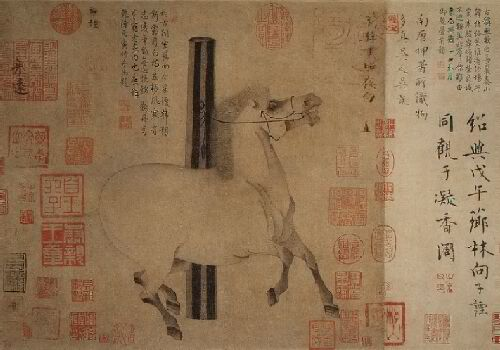The Silk Road: How Ancient Trade Routes Shaped the Modern World
The Silk Road's Enduring Legacy: Connecting Ancient Worlds Through Trade and Cultural Exchange

Introduction: Imagine a vast, intricate network of ancient trade routes that profoundly connected the East and West for centuries: this was the Silk Road. Far more than just a passage for its namesake commodity, silk, this historical pathway facilitated an unparalleled exchange of diverse goods, groundbreaking ideas, various religions, and rich cultures, deeply influencing the civilizations it encountered. This article delves into the fascinating history, significant impact, and enduring legacy of the Silk Road, exploring its development, vital commodities, profound cultural exchange, and eventual decline, while underscoring its continued importance in today's world.
Origins and Development of the Silk Road: From Han to Tang Dynasties

Early Trade: The origins of the Silk Road are deeply rooted in China's Han Dynasty (207 BCE – 220 CE). Emperor Wu of Han sent Zhang Qian on a mission to form alliances against the Xiongnu, a nomadic threat to China. Although the military alliance didn't fully succeed, Zhang Qian's journeys were pivotal, opening up crucial trade routes into Central Asia. Early trade along these routes primarily involved horses, essential for the Chinese military, exchanged for Chinese silk and other valuable goods.
Expansion and Golden Age: Gradually, the Silk Road network expanded significantly, forming numerous paths that wound through vast deserts, towering mountains, and expansive steppes. The Kushan Empire held sway over a vital segment of these routes, playing a key role in facilitating trade during the early centuries CE. The Tang Dynasty (618–907 CE) marked a true golden age for the Silk Road, driven by China's remarkable political stability and economic prosperity, which fueled immense trade and cultural interaction. Major cities like Chang'an (now Xi'an) transformed into vibrant, cosmopolitan centers, drawing in merchants, esteemed scholars, and diverse religious figures from around the world.
Key Commodities and Silk Road Trade Dynamics

Goods Exchanged: Although silk gave the Silk Road its famous name, this historic network actually facilitated the exchange of an astonishing variety of goods. From the East, China sent out valuable commodities like silk, tea, fine porcelain, exotic spices (including cinnamon and ginger), jade, and paper. In return, the West provided items such as horses, wool, linen, precious metals like gold and silver, exquisite stones, glass, and a diverse range of fruits and vegetables.
Trade Dynamics: Trade along the Silk Road was rarely a simple, direct transaction. Instead, goods frequently moved through several intermediaries, which often increased their value at each stage of the journey. Central Asian cities, notably Samarkand and Bukhara, thrived as essential trading hubs, functioning as bustling marketplaces and efficient distribution centers. The Sogdians, a skilled Persian people, were particularly influential merchants on the Silk Road, setting up trading outposts and greatly improving communication across diverse cultures.
Cultural and Religious Exchange Along the Silk Road: A Melting Pot of Ideas

Religious Diffusion: Beyond material goods, the Silk Road served as a dynamic force for extensive cultural and religious diffusion. Buddhism, which originated in India, notably spread eastward along these very ancient trade routes, eventually becoming a prominent religion in China, Korea, and Japan. Dedicated monks, missionaries, and pilgrims journeyed these paths, tirelessly translating scriptures and founding numerous monasteries.
Cultural Exchange: In addition to Buddhism, other significant religions, including Nestorian Christianity, Manichaeism, and Islam, also expanded their reach along the Silk Road. This vibrant exchange also encompassed diverse artistic styles, rich musical traditions, and crucial scientific knowledge. For instance, Chinese papermaking technology traveled westward, fundamentally transforming communication and learning across the Islamic world and later, Europe. Likewise, Western artistic motifs and specialized techniques had a profound influence on Chinese art.
The Silk Road's Decline and Enduring Legacy: From Maritime Routes to the Belt and Road Initiative
Decline: The historic Silk Road began its decline around the 15th century, influenced by several key factors. The emergence of new maritime trade routes, spearheaded by adventurous European explorers, presented a significantly faster and more cost-effective method for transporting goods globally. Concurrently, increasing political instability across Central Asia, marked by the breakdown of empires and a surge in banditry, severely disrupted traditional land-based trade.
Enduring Legacy and Modern Revival: Despite its eventual decline, the Silk Road's enduring legacy remains profound. It left an indelible and transformative mark on the cultures, societies, and economies of all the regions it interconnected. The unparalleled exchange of innovative ideas and critical technologies spurred remarkable innovation and development across continents. In the contemporary world, the pioneering spirit of the Silk Road is experiencing a modern revival through China’s ambitious Belt and Road Initiative (BRI). This monumental infrastructure project aims to physically connect Asia, Europe, and Africa via extensive networks of railways, roads, ports, and energy pipelines. Although the BRI is a distinctly modern endeavor, it consciously draws inspiration from the historical Silk Road, striving to promote broad economic cooperation and vibrant cultural exchange on a truly global scale.
Conclusion

Final Thoughts: Ultimately, the Silk Road remains an unparalleled testament to the transformative power of ancient trade and profound cultural exchange. It was a remarkably dynamic network that fundamentally shaped the course of global history, intricately connecting diverse civilizations and continuously fostering innovation and progress. While the physical Silk Road routes may have faded into history, its extraordinary legacy continues to resonate powerfully today. It serves as a timeless reminder of our interconnected world and the invaluable, enduring benefits derived from cross-cultural understanding and collaboration.
